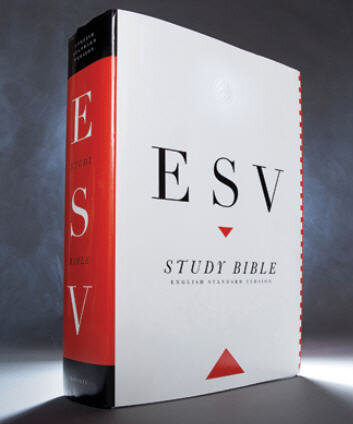A New NAR Bible (Part 4): The Passion Translation vs. the English Standard Version
 In my past three posts (Part 1, Part 2 and Part 3), I looked closely at a new translation of the Bible called "The Passion Translation," produced by NAR apostle Brian Simmons. I showed why it is not a trustworthy translation.In this post, I will show four things to look for in a trustworthy translation. To illustrate those characteristics, I will contrast the The Passion Translation with another newer translation, the English Standard Version (ESV).
In my past three posts (Part 1, Part 2 and Part 3), I looked closely at a new translation of the Bible called "The Passion Translation," produced by NAR apostle Brian Simmons. I showed why it is not a trustworthy translation.In this post, I will show four things to look for in a trustworthy translation. To illustrate those characteristics, I will contrast the The Passion Translation with another newer translation, the English Standard Version (ESV).
Four Characteristics of a Trustworthy Translation
A trustworthy translation is produced by a team of translators. Unlike The Passion Translation, which was produced by a lone individual, the ESV was produced by more than 100 Bible scholars--an international team from many denominations. Why is team translation work important? It provides checks and balances to make sure that the translation is accurate and doesn't reflect the pet theological views of just one person or only a certain group of Christians.A trustworthy translation is produced by reputable scholars. Apostle Simmons' single credential--other than the fact that he claims to be an apostle--is that he assisted in a translation project of the New Testament for an indigenous people group in Panama. But he apparently has no formal academic training--only the on-the-job training he received during his eight-year stint in Panama working with New Tribes Mission.In contrast, the translators behind the ESV are leading Bible scholars with the highest academic credentials awarded from respected seminaries and universities.A trustworthy translation is produced from early manuscripts. Much of The Passion Translation was translated from Aramaic manuscripts of the New Testament that date to the fifth century. I wrote about this in my last post. In contrast, the ESV was translated primarily from Greek manuscripts of the New Testament that were written centuries earlier. The reason the date of the manuscripts is so important is this: the closer a manuscript is to the original documents means there was less time for its text to be changed or for copyist errors to creep in. Think of the "telephone game": the more people who transmit the message, the more it changes.A trustworthy translation is transparent. In the "Translator's Introduction" to Letters From Heaven, apostle Brian Simmons makes a number of bold claims without offering any way to verify the truth of his claims. For example, he claims that "many new discoveries" have been made that indicate that the original documents of the New Testament were actually written in Aramaic, not Greek. Yet, he does not identify a single discovery. So how can one know that what he says about those discoveries is true?As another example, Simmons claims that "some scholars" are starting to believe that the New Testament was originally written in Aramaic. Yet, he does not identify who these scholars are. So, how can one know that they are legitimate scholars?As a third example, he never identifies the specific manuscripts he translated from. So how can one know if he used reliable manuscripts?In contrast to Simmons' lack of transparency, the translators behind the ESV lay all their cards on the table--thus, their work can be verified. The ESV Web site provides a complete list of the scholars who contributed to the ESV translation and identifies, by name, the specific manuscripts that were used for their translation work.Other Trustworthy TranslationsSome other trustworthy translations of the Bible that shares these four characteristics include the New International Version (NIV) and the New American Standard Bible (NASB).You can find out if the translation you use shares these characteristics by looking at the opening pages of your Bible. The "Preface" or "Introduction" will generally explain how the translation work was undertaken--including how many scholars did the work, who those scholars were, and if their work was based on early manuscripts.See more posts about the Passion Translation here.-- By Holly Pivec
